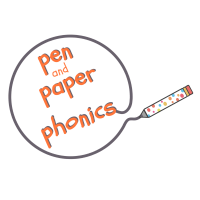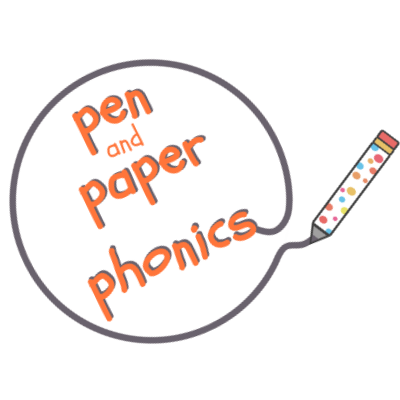Blending and segmenting are crucial phonics skills for reading. Knowing and understanding these terms will help you as you support your child or student’s reading journey.
There are various ways to blend and segment that develop and support reading skills – for example, being able to segment the words in a sentence and work out how many words are in that sentence is important. Being able to blend and segment the syllables in a word is another step in blending and segmenting for reading.
This page is dealing with the last step in blending and segmenting – blending and segmenting the individual sounds in words.
*Before you dig in, it’s helpful to know the following:
When a letter is written like this: /a/, you need to read the sound the letter makes (as in the sound that the letter ‘a’ makes in apple).
When a letter is written like this: ‘a’, read the letter name (as in the name of the letter that you say when you recite the alphabet).
Not got much time? Click for the ‘One Minute Version’ of this page.
What is Blending and Segmenting?
Blending and segmenting go hand in hand, and while beginning readers usually learn these skills side by side, generally blending is a little easier then segmenting.
To blend and segment, a learner has to be able to distinguish the sounds in a word.
Every word we speak is made up of different sounds. These sounds are blended together as we speak. In order to be able to read and spell, we need to be able to segment, or separate, the sounds in a word and then blend them back together.
SEGMENTING is the process of separating the sounds in words, and BLENDING is the process of merging the sounds back together again.
For some words this is relatively easy to understand (‘cat’), for others, it’s a bit harder (‘house’).
So, for example, ‘cat’
To segment this word you need to separate the sounds into /c/ /a/ /t/. There are three sounds in this word (as well as three letters).
To blend the word ‘cat’, you need to be able to push the sounds together, so that, instead of being three separate sounds, they form the word ‘cat’.
Move through the slides below to see a visual representation of blending and segmenting processes:
Other examples:
- ‘went’
- The word ‘went’ has four sounds ( /w/ /e/ /n/ /t/ ) and four letters (‘w’ ‘e’ ‘n’ t’)
- ‘ship’
- A word like ‘ship’ has only three sounds ( /sh/ /i/ /p/ ) even though it has four letters (‘s’ ‘h’ ‘i’ ‘p’)
- ‘house’
- A word like ‘house’ still only has three sounds ( /h/ /ou/ /s/ ), but it has five letters (‘h’ ‘o’ ‘u’ ‘s’ ‘e’)
- ‘chair’
- But the word ‘chair’ has two sounds ( /ch/ /air/ ) and five letters ( ‘c’ ‘h’ ‘a’ ‘i’ ‘r’)
As you can see, it can be a tricky process!
There are two distinct stages in blending and segmenting:
1. Blending and Segmenting Orally
This is blending and segmenting with words in everyday speech, out loud, without reading the words.
When a learner is learning to blend and segment, they don’t have to know letter sound correspondence, in other words, they don’t have to be able to read.
Therefore, oral blending and segmenting is something young children can start, and must start doing, before they read.
This is because a child needs to be able to hear the sounds in words, before they can try to read words.
Most often, children learn to blend orally before they learn to segment orally.

So for example if you said to a child, “Please go and get your /c/-/oa/-/t/”, that is great practice for blending. They are hearing the segmented sounds, and they are putting them together and understanding that the word is ‘coat’.
Later on, they might be able to separate words into sounds (segment). This might occur naturally (for example, “I said “/n/ /oooo/”), or it might require someone to model it (for example, “What sounds are in ‘cup’? I hear 3 /c/ /u/ /p/”)
2. Blending and Segmenting While Reading
This is where children are blending and segmenting whilst looking at a word. It is the next step after being able to segment and blend orally. This is when the child knows the letter sound correspondences. They know what sound each letter in a word represents.
In this case, segmenting comes first, then blending.
The learner looks at a word, sounds out the sounds in the word, then pushes the sounds together – they blend the sounds into a word.

At first, starting with ‘one letter, one sound’ short, regular words is easiest.
For example ‘on’. This has two letters, and each letter makes one sound. It is a regular word, with not much to segment and blend.
Then as they get confident in this, they will start to segment the word in their head, blend it back together in their head and read the word.
Eventually, they do not need to sound out, as they recognize the word on sight.
So that’s Blending and Segmenting
As with everything in reading, each child is different. So the time it takes for them to master and move through these stages will be very different.
The One Minute Version:
- Blending and Segmenting are key phonics skills.
- Segmenting is the process of separating a word into it’s individual words. Think /c/ /a/ /t/.
- Blending is the process of pushing the sounds in words together, to read or hear the word. Think /c/ /a/ /t/ becomes ‘cat’.
- First learners do it orally, in everyday speech, Then they do it in order to read, and later to spell words.
Any questions or comments? As always, please get in touch! hannah@penandpaperphonics.com

Further Resources
This site has some great video clips of blending and segmenting for reading in practice in the classroom.
Have a go yourself in this fun video.
Finally, check out my blending and segmenting flashcards for CVC words ending in ‘-at’


